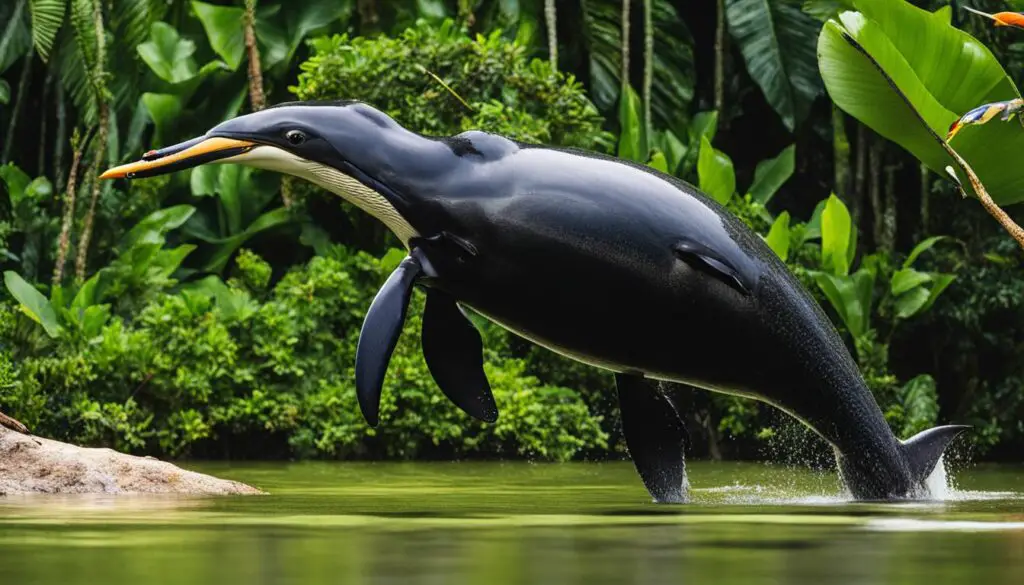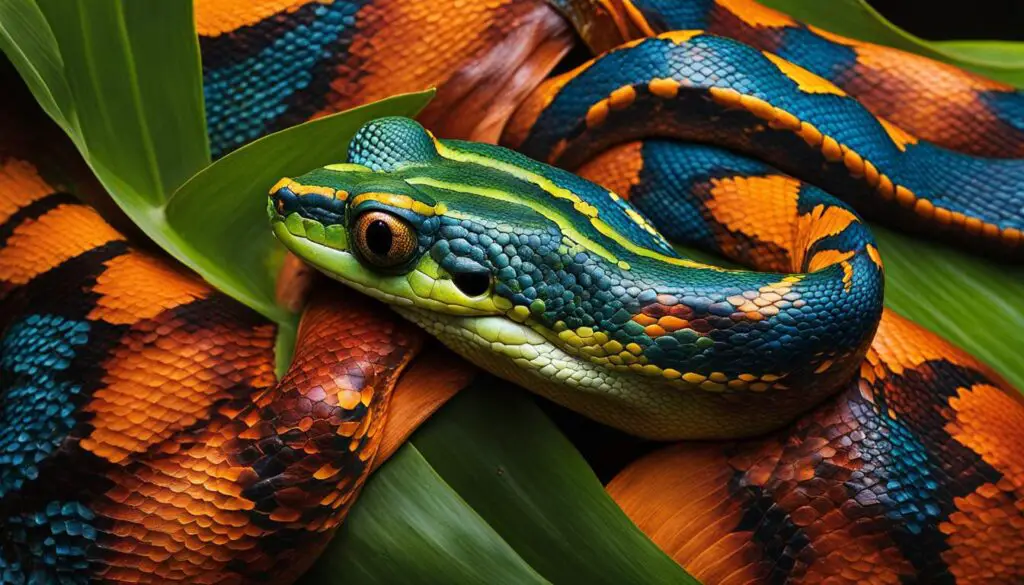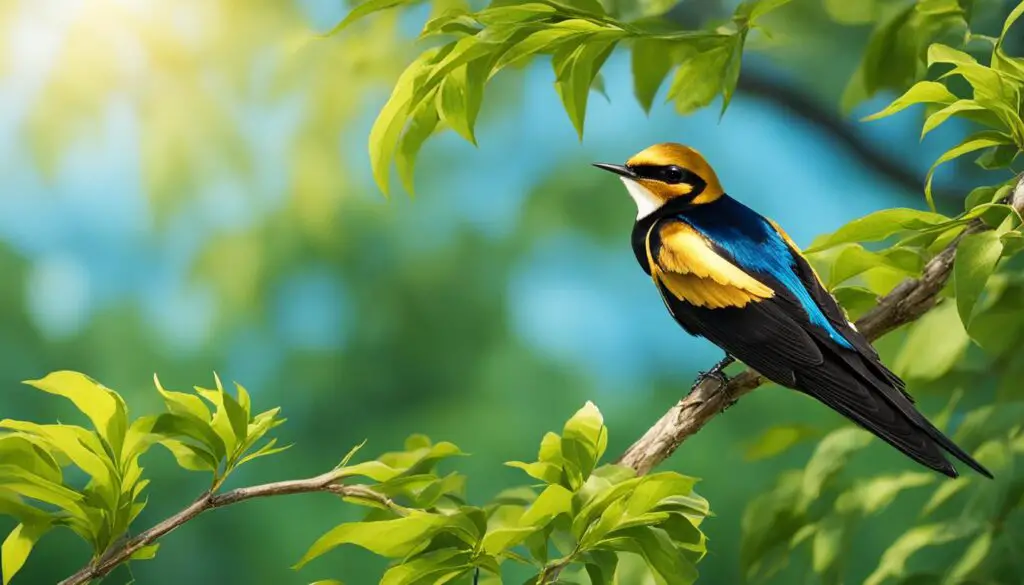The Dominican Republic is a country known for its stunning landscapes and vibrant biodiversity. From lush rainforests to pristine coastlines, the country is home to a diverse range of animal species, making it a haven for wildlife enthusiasts and nature lovers. Whether you are interested in birdwatching, marine life, or exploring the unique reptiles and amphibians, the Dominican Republic offers endless opportunities to connect with nature and experience its wonders.
With its rich fauna and impressive wildlife, the Dominican Republic boasts a wide variety of species. From the endangered Hispaniolan solenodon, a nocturnal insectivore, to the majestic West Indian manatee, the country is a sanctuary for many unique and endangered animals. The stunning biodiversity of the Dominican Republic is a result of the country’s varied ecosystems, including mangrove forests, mountain ranges, and marine reserves.
Wildlife conservation is a priority in the Dominican Republic, with numerous protected areas and natural reserves dedicated to preserving and safeguarding the country’s precious animal species. Efforts are made to educate visitors and locals about the importance of wildlife preservation, and wildlife conservation organizations offer tours and programs that allow visitors to experience the beauty and diversity of the Dominican Republic’s fauna firsthand.

Key Takeaways:
- The Dominican Republic is home to a diverse range of animal species.
- The country offers opportunities for wildlife enthusiasts and nature lovers to observe and appreciate unique fauna.
- Endangered species, such as the Hispaniolan solenodon and West Indian manatee, can be found in the Dominican Republic.
- Wildlife conservation is a priority, with protected areas and natural reserves dedicated to preserving the country’s biodiversity.
- Visitors can participate in wildlife tours and programs to experience the beauty and diversity of the Dominican Republic’s fauna.
Marine Life in the Dominican Republic
The coastal waters of the Dominican Republic are teeming with a diverse array of marine life. From majestic humpback whales to playful dolphins, the country offers a unique opportunity to witness these magnificent creatures in their natural habitats.
Humpback Whales in Samaná
One of the most awe-inspiring spectacles in the Dominican Republic is the annual migration of humpback whales to Samaná Bay. Each year, more than 2,000 whales travel from the cold waters of Iceland, Greenland, and North America to the warm Caribbean waters of the Dominican Republic. This mesmerizing display of nature’s magnificence attracts visitors from around the world, eager to witness the acrobatic displays and listen to the enchanting songs of these gentle giants.
Dolphins in Los Haitises National Park
Lose yourself in the beauty of Los Haitises National Park, a sanctuary for dolphins and other marine species. This biodiverse haven is known for its thriving dolphin population, providing visitors with the incredible opportunity to observe these playful creatures in their natural environment. Whether you’re aboard a boat or embarking on a kayaking adventure, prepare to be enchanted by their graceful movements and playful interactions.
Manatees in Estero Hondo
Estero Hondo Marine Mammal Sanctuary is a sanctuary for one of the most elusive and gentle marine creatures – the manatees. This protected area provides a safe haven for these endangered animals, offering a rare glimpse into their peaceful existence. Hop aboard a boat and sail through the calm waters as you keep your eyes peeled for these gentle giants, gracefully gliding through their aquatic paradise.
Coral in Montecristi and Pedernales
Prepare to be mesmerized by the vibrant coral reefs that adorn the waters of Montecristi and Pedernales. These two coastal destinations boast some of the most stunning and diverse coral formations in the Dominican Republic. Dive beneath the surface and immerse yourself in a kaleidoscope of colors as you discover the rich marine ecosystem that thrives beneath the waves.
Immerse yourself in the wonders of marine life in the Dominican Republic, where breathtaking encounters await at every turn. From the magnificent humpback whales in Samaná to the playful dolphins in Los Haitises National Park, and the gentle manatees in Estero Hondo, the coastal waters offer a gateway to an underwater realm like no other. Explore the coral reefs of Montecristi and Pedernales, where a vibrant world of marine biodiversity awaits your discovery.
| Marine Life | Location |
|---|---|
| Humpback Whales | Samaná |
| Dolphins | Los Haitises National Park |
| Manatees | Estero Hondo |
| Coral | Montecristi and Pedernales |
Reptiles and Amphibians in the Dominican Republic
The Dominican Republic is a haven for reptile and amphibian enthusiasts, boasting a diverse range of species that inhabit its unique ecosystems. Two notable reptiles found in specific areas of the country are the Ricord’s iguana and the rhinoceros iguana. These fascinating creatures are endemic to the island of Hispaniola and play a crucial role in maintaining the island’s ecological balance.
The Ricord’s iguana (Cyclura ricordii) is a critically endangered species that primarily inhabits the dry forests of the Dominican Republic. With its distinct blue coloration and striking appearance, it is a true treasure of the island. Conservation efforts are underway to protect and preserve its habitat and population.
“The Ricord’s iguana is a flagship species for conservation in the Dominican Republic. Its survival not only represents the preservation of a unique reptile but also the ecological health of its entire ecosystem.” – Dr. Maria Martinez, Herpetologist
Another prominent reptile species in the Dominican Republic is the rhinoceros iguana (Cyclura cornuta). Named for its horn-like protrusions on its snout, this species can be found in rocky habitats such as limestone cliffs and coastal areas. The rhinoceros iguana is known for its impressive size and territorial behavior, making it an intriguing subject for researchers and nature enthusiasts.
Amphibians also have a significant presence in the Dominican Republic, contributing to its rich biodiversity. The country is home to various frog species, including the endangered Hispaniola tree frog (Hylodesmica). Found in montane forests and cloud forests, this small but charismatic amphibian serves as an indicator species for the overall health of its habitat.
To fully appreciate the reptiles and amphibians of the Dominican Republic, visitors can explore the country’s protected natural reserves and national parks. These areas provide a safe haven for these remarkable creatures, allowing them to thrive and ensuring their continued existence for generations to come.
| Reptile Species | Status | Habitat |
|---|---|---|
| Ricord’s iguana | Critically Endangered | Dry forests |
| Rhinoceros iguana | Endangered | Limestone cliffs and coastal areas |
Conservation Efforts:
Conservation organizations in the Dominican Republic are actively working to protect and preserve the reptiles and amphibians of the country. These initiatives involve habitat restoration, captive breeding programs, and public awareness campaigns to promote the importance of these species for the island’s ecosystems.
By safeguarding the habitats and populations of the Ricord’s iguana, rhinoceros iguana, and other reptiles and amphibians, the Dominican Republic is taking significant steps towards preserving its unique natural heritage and fostering a sustainable environment for future generations.

Birdlife in the Dominican Republic
The Dominican Republic is a paradise for birdwatching enthusiasts. With over 300 bird species, including 32 indigenous species, the country offers a diverse and captivating avian population. The Cordillera Central, Hispaniolan pine and mangrove forests, river basins, and national parks are prime locations for birdwatching.
Some of the most sought-after bird species include the golden swallow, vervain hummingbird, and Hispaniolan palmchat. These endemic species showcase the unique biodiversity of the Dominican Republic and contribute to its status as a haven for birdlife.
One of the notable bird species in the Dominican Republic is the golden swallow (Tachycineta euchrysea). It is an endangered species with a small population found exclusively in the Hispaniola island. The golden swallow is known for its striking yellow plumage, making it a sought-after sighting for bird enthusiasts and conservationists.

“The Dominican Republic is home to a rich variety of bird species, making it an ideal destination for birdwatching. The golden swallow is a unique avian species found exclusively in the country’s forests and serves as an important indicator of the region’s biodiversity.”
Another notable bird species is the vervain hummingbird (Mellisuga minima). This tiny bird species is endemic to the Hispaniola island and is known for its rapid wing movements and ability to hover in mid-air. The vervain hummingbird is a favorite among birdwatchers for its vibrant plumage and elusive nature.
Endemic Bird Species in the Dominican Republic
| Bird Species | Description | Status |
|---|---|---|
| Golden swallow | A small, brightly colored bird with a limited range in the Dominican Republic. | Endangered |
| Vervain hummingbird | A tiny hummingbird species found exclusively on the Hispaniola island. | Data Deficient |
| Hispaniolan palmchat | A sociable bird with distinctive crested feathers, endemic to the Dominican Republic. | Least Concern |
The Hispaniolan palmchat (Dulus dominicus) is another fascinating bird species in the Dominican Republic. It is the national bird of the country and is known for its unique nest-building behavior, creating large communal nests made of woven twigs. The palmchat is a common sight in the country’s forests and is considered a symbol of Dominican identity and pride.
The birdlife in the Dominican Republic is not only a treat for birdwatchers but also vital for the country’s ecosystems. These endemic bird species play a crucial role in pollination, seed dispersal, and regulating insect populations. Protecting their habitats and conserving their populations is essential for maintaining the ecological balance of the Dominican Republic.
Conclusion
The Dominican Republic is a true paradise for wildlife enthusiasts and nature lovers. With its diverse ecosystems and rich biodiversity, the country offers a unique opportunity to observe and appreciate a wide range of animal species.
From the awe-inspiring humpback whales that migrate to Samaná Bay to the captivating reptiles and amphibians that inhabit the forests and wetlands, the Dominican Republic is a treasure trove of natural wonders. It is home to endemic species like the Ricord’s iguana and the Hispaniolan palmchat, which contribute to its status as a haven for biodiversity.
Efforts in wildlife conservation and the establishment of protected reserves are crucial in preserving the country’s unique fauna. By supporting these initiatives, we can ensure the long-term survival of animals in the Dominican Republic and maintain the equilibrium of its ecosystems.
Whether it’s exploring the breathtaking marine life, embarking on a birdwatching adventure, or encountering the endemic reptiles and amphibians, the Dominican Republic provides countless opportunities to connect with nature and appreciate its unparalleled beauty. It is a destination that truly celebrates and respects its wildlife, making it an ideal choice for nature lovers seeking an immersive and unforgettable experience.
FAQ
What types of animals can be found in the Dominican Republic?
The Dominican Republic is home to a diverse range of animal species, including mammals, birds, reptiles, and marine life.
Are there any endangered species in the Dominican Republic?
Yes, the country is home to some critically endangered species, highlighting the need for wildlife conservation efforts.
What is the biodiversity like in the Dominican Republic?
The Dominican Republic boasts a rich biodiversity, with a wide variety of animal species inhabiting its ecosystems.
Are there any native animals in the Dominican Republic?
Yes, the country is home to several native animal species, some of which are endemic to the island of Hispaniola.
Are there any wildlife conservation efforts in the Dominican Republic?
Yes, the Dominican Republic has established protected natural reserves and is actively involved in wildlife conservation initiatives.
Are there wildlife tours available in the Dominican Republic?
Yes, there are wildlife tours in the Dominican Republic that offer opportunities to observe and learn about the country’s unique fauna.
What are some notable bird species in the Dominican Republic?
The Dominican Republic is known for its diverse avian population, including endemic species such as the golden swallow, vervain hummingbird, and Hispaniolan palmchat.
